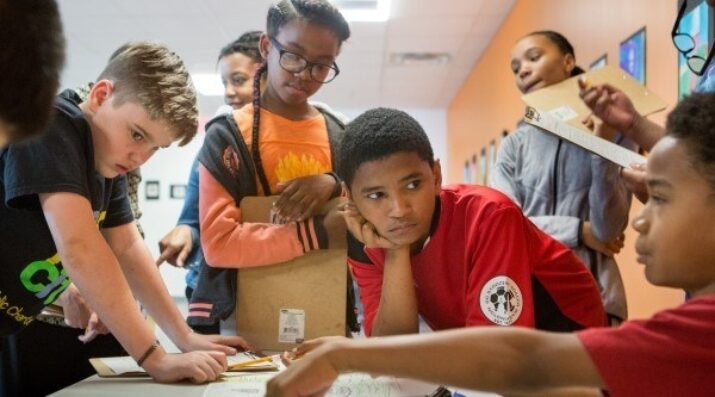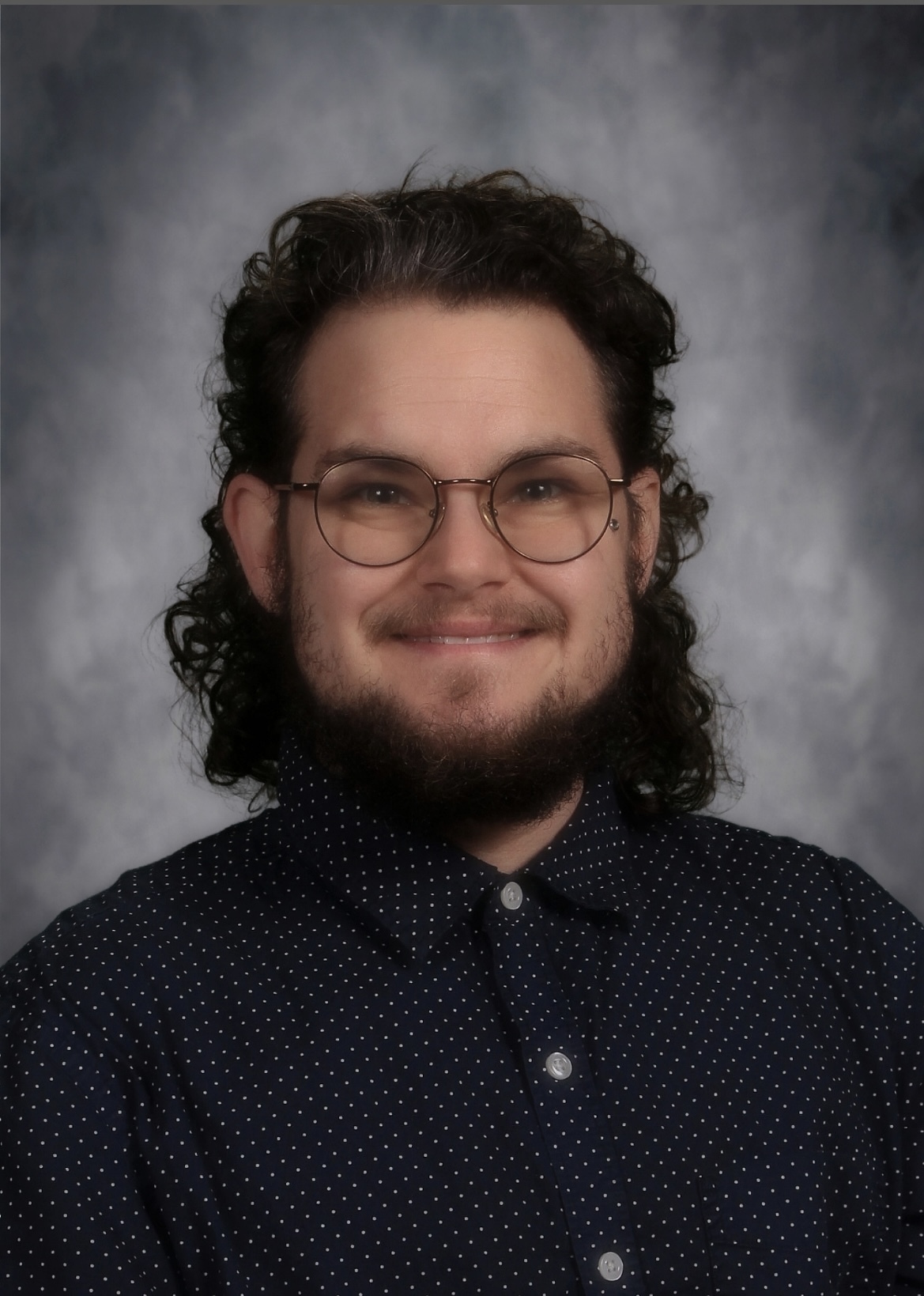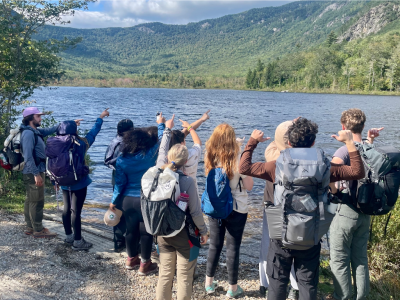Professional Learning
Student Voice and Teacher Voice: 3 Ingredients to Foster Both
Topics

Educators are the lead learners in schools. If they are to enable powerful, authentic, deep learning among their students, they need to live that kind of learning and professional culture themselves. When everyone is part of that experiential through-line, that’s when next generation learning thrives.
By finding his voice as a teacher, this Tennessee educator is discovering how to bring out his students’ voices–their growing knowledge base and their heart and soul.
Growing up, I didn’t necessarily want to be a K-12 teacher. I had other passions, and besides—I was timid and quiet around large groups of people. There were times throughout my K-12 school experiences where my fellow classmates probably wondered if I even could speak.
However, during the pandemic, I thought I might give K-12 teaching a try. Though my first year was not a great fit, I found I loved being in the classroom. So I ended up moving states, teaching at a new school, and starting a master of arts in teaching program at Relay Graduate School of Education, concentrating in both “Middle School English Language Arts” and “Culturally and Linguistically Diverse Learners.”
And that was when I slowly but surely began to find my teacher voice. In doing so, I also found how to bring out my students’ voices–not just their growing knowledge base (which is crucial), but also their heart and soul. I learned to see, value, and nurture the voice within.
This started with the way we were taught as novice teachers. In my classes at Relay, I experienced three important ingredients:
1. Being Treated as an Expert
This sounds paradoxical; how can a novice be an expert? Although I learn from more seasoned teachers every single day, as a newer, often younger teacher, I have the benefit of being up-to-date with today’s students and what they find interesting. I am also learning current teaching methods in my Relay courses. As a new K-12 teacher, I brought with me theories of second language acquisition that I learned during my master’s program in Hispanic linguistics, as well as my own experience learning a second language. Relay built upon that and added other evidence-based techniques like engineered texts, using songs to foster learning, and helping students scaffold knowledge with their home language within the classroom. Whereas my co-teacher is an expert in her content area, I am an expert at helping our multi-language learner (MLL) students grow in English proficiency.
2. Being Given Concrete Tools to Help Me Succeed.
The master’s program at Relay gave me skills that I could put into practice the next day in my teaching. For example, skills like positive narration (i.e., narrating the behavior you want to see), least-invasive redirections, and having teacher “perches” throughout the classroom, among other things, helped me strengthen my classroom management, which helped me become a more effective teacher. Rather than simply possessing the theory, I was able to implement my strategies in class.
Something else that I learned in my Relay courses is that not every method that is backed by data will work for every teacher or in every classroom. While I love positive narration, I taught a class last year that did not respond well to it. Instead, I started quietly complimenting specific pieces of students’ work and behavior within earshot of other students, rather than in front of the whole classroom. Because I have been given all of the tools I need, I am able to foster a calm classroom environment in which my students and I can all thrive and grow.
3. Being Given Choices
My courses at Relay offered me a great deal of flexibility. Because of my concentration in culturally and linguistically diverse learners, my teaching assignments could be on almost any topic, as long as I showed how I implemented the skills I learned in my classroom. Choosing what strategy I was going to use out of my toolkit gave me a way to confidently lead my lessons. By having choice over how to implement the material, I felt a sense of ownership and respect–and it made my learning actually useful, as I could tailor it to my classroom.
Nurturing Student Voice Requires the Same Ingredients
Teaching is an incredibly complex practice, and becoming great will never be easy. But slowly, I started to notice myself feeling more confident in my identity and presence as a teacher. I recall one lesson, in particular, that brought it all together.
In one of my ELA instruction classes at Relay, we learned about project-based learning assignments (PBLs). Coupled with the scaffolding strategies that I learned in my culturally and linguistically diverse learning classes, I was able to construct a PBL lesson for the course I was teaching that was important to my students and that was scaffolded to their needs. I asked students to create an interactive map on Google Maps and then write 3-10 sentences based on their level of proficiency to tell me about a place that they used to live in, the place that they live now, or a place that they would like to live. Almost all of my students chose to write about their country of origin. I learned that Egypt has beautiful beaches, date trees, and good coffee. I also learned that Honduras has better fruit than the United States (my students were adamant about this). I then asked students to share with either a poster board or a PowerPoint (all students chose a PowerPoint). Every single one of my students was excited to share with their classmates and with me.
This lesson was the first time I really felt that I was succeeding at my job. It was the first time I felt like I was asking good probing questions and getting excellent responses that exceeded my expectations. Why was that? I wasn’t sure.
And then it hit me.
By being allowed to talk about their country of origin, my students were being treated like experts. By being given the appropriate scaffolds (sentence stems, word banks, and a model map that I made), they were being given the appropriate tools to succeed. And finally, by being given a choice in what place they wanted to present on, and how they wanted to present the information to both their class and to me, they were being given choices. Everything that made the PBL fun to design for me is what made it fun for my students to engage in. I noticed a shift in my interactions with students after that, where they were more comfortable sharing with me.
This practice of fostering student voice is not just for their academic pursuits, but also how I learned to think about classroom management–as being rooted in relationships. Although my students know that the expectation in my class is that we are calm and not chaotic, I never have to raise my voice to get there–my teacher voice is calm, affirming, and warm. My students know that I care about them and want to know how they are.
Something in particular that made me feel affirmed is when I had one student—we will call him E—who was not meeting expectations, which was very unlike him. Seeing this as an opportunity to view behavior as communication (something else I learned at Relay), I found a time when it was ok to pull him aside and, using a calm and warm teacher voice, asked what was wrong. He confessed to me that he was hungry because he forgot his lunch, and that he was in a religious fasting period when he had to abstain from all animal products. I asked if he would like some fruit snacks, which were vegan, and he said yes. He ate them and seemed to have a complete change in disposition for the rest of the day–he was engaged in learning and contributed to the classroom environment and discussion. This is not always how we think of “student voice,” but creating a safe space for students to share what’s going on for them is an essential part of their voice, too. E was able to not only “bounce back” for himself, but also offer insight in his classes that he might not have done had nobody checked in on him.
I learned these skills by experiencing them as a teacher in development. Teacher preparation programs and schools need to treat teachers the same way we would want to treat our students—with faith in our abilities, confidence in our growth, and compassion for how we show up in what can be a tough world. We can then create school communities that lift up all of our voices. Much how my classroom is better for having all of my students, school communities are better for having teachers who have been prepared by such teaching programs.
Photo at top by Allison Shelley/The Verbatim Agency for EDUimages, CC BY-NC 4.0.




